When’s the last time you stepped into your customers’ shoes?
Because sure, you probably might know what your ideal customer looks like. But what about the customer journey that results in your repeat, loyal shoppers?
Listen: consumers today are bombarded with marketing messages like never before. This recent retail study from Marketing Charts is just another reminder of how many ways customers discover brands, most of which stem from word-of-mouth.
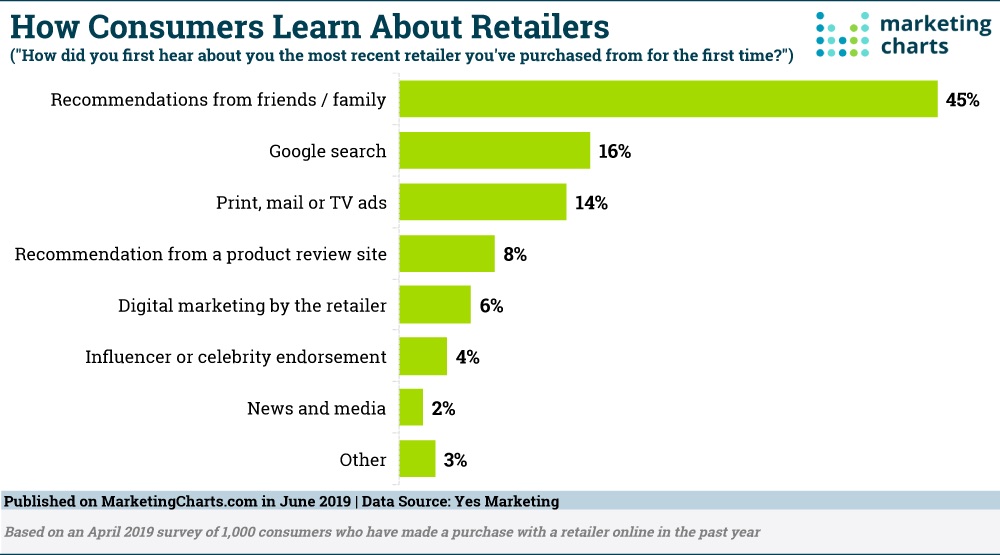
The takeaway here? There is no “single” or “correct” path to purchase to win more sales. And while businesses obviously have multiple ways to move people from prospect to customer, it’s easy to overlook the importance of customer journey mapping.
In this guide, we detail how to create a customer journey that makes sense, resulting in more conversions and fewer leads falling out of your funnel.
Why the Customer Journey Matters So Much
At a glance, customer journey mapping much might just seem like another item on your seemingly endless to-do list of marketing tasks. However, consider that understanding the customer journey (and touch points along the way) are among some of the top challenges of modern marketers.
According to a recent survey by SmartInsights, 44% of businesses struggle with getting a holistic view of their customer interactions. The same study noted that 40% of marketers have difficulty creating a consistent experience through the customer lifecycle.
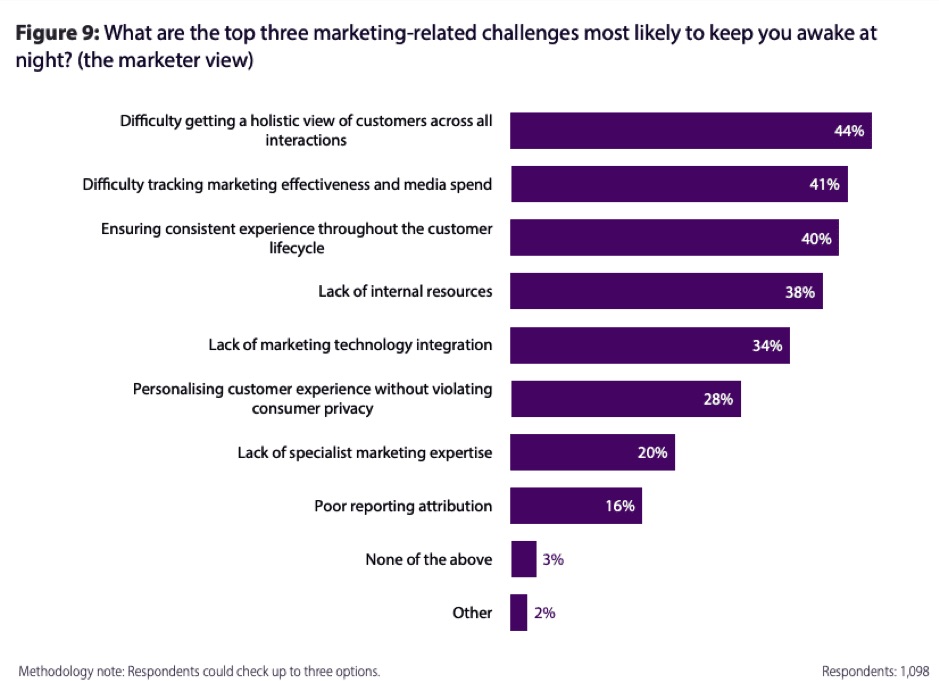
Putting your customer journey under the microscope can make these challenges much less daunting. If nothing else, doing so can help you identify weak points in your funnel and give your conversion rates a much-needed boost.
What Does the Customer Journey Look Like?
Here’s a snapshot of how new and current customers might experience the customer journey:
| New Customer A | New Customer B |
|
|
| Return Customer A | Return Customer B |
|
|
And that doesn’t even scratch the surface of what’s possible, especially if you run a brick-and-mortar store in addition to your online presence.
The unpredictable nature of the customer journey and myriad of available marketing channels isn’t necessarily a negative, though. Consider the old-school marketing “rule of seven” which states you need to make seven touch points with someone before they’re ready to buy.
Having multiple avenues to reach and convert customers is absolutely necessary. The customer journey is rarely linear. That said, you likely have a variety of paths laid out for people to discover and purchase your products, right?
You run ads campaigns and promotions. You have your marketing channels prioritized. But how do you bridge the gap between how people find you and how you want people to find you?
The short answer is customer journey mapping.
The Art of Customer Journey Mapping
Mapping the customer journey starts by breaking it up into various stages. Based on these stages, you clearly assess which parts of your funnel need fine-tuning and likewise, what’s already working.
Looking at your funnel piece-by-piece also encourages you to look at your marketing campaigns as a series of paths rather than something that’s just sort of “there.”
Below we’ve broken down a five-point funnel framework that applies to just about any business.
Part 1: Awareness
This is where you’re dealing with top-of-funnel leads. In other words, folks who are in the learning stage about who you are, what you’re selling and whether or not they need your product in the first place.
Ask yourself: how are you putting yourself out there to people in the “just browsing” phase? What does your discovery phase look like and how do they find you?
For some, it might be through product listing ads based off of a Google search.
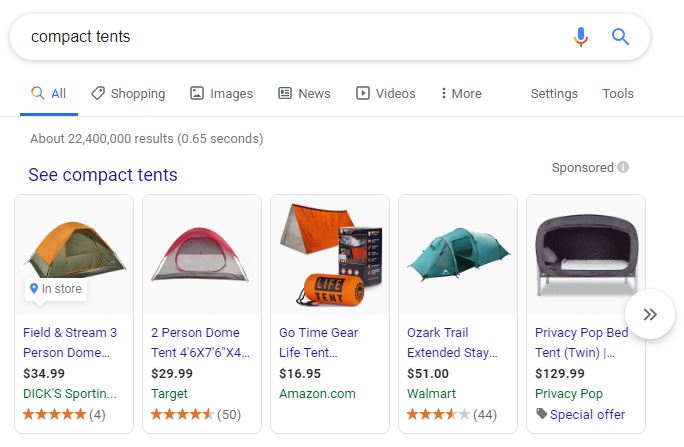
And for others, it might be a piece of content or advertising which breaks down their search “at a glance.” Sometimes it takes general statistics to get people to understand what you do.
If you haven’t figured out your customer engagement strategy, it’s high time to do so. But make sure you focus on the first step–awareness, before getting too deep.
Here’s an awesome example from Home Chef (with over a million views to boot).
Part 2: Consideration
This is a critical funnel phase that’s easy to overlook. How do you stack up against the competition when people are faced with an “either-or” choice?
This signals the importance of having a repository of customer reviews. Some studies suggest 95% of consumers read online reviews before making a purchase. In fact, 20% of shoppers say they’ll leave for another brand or retailer site if there aren’t reviews (or enough reviews) on-site.
Whether it’s a Google search or side-by-side comparison features like what we see on Amazon, having star-rating and social proof is a major point in your favor.
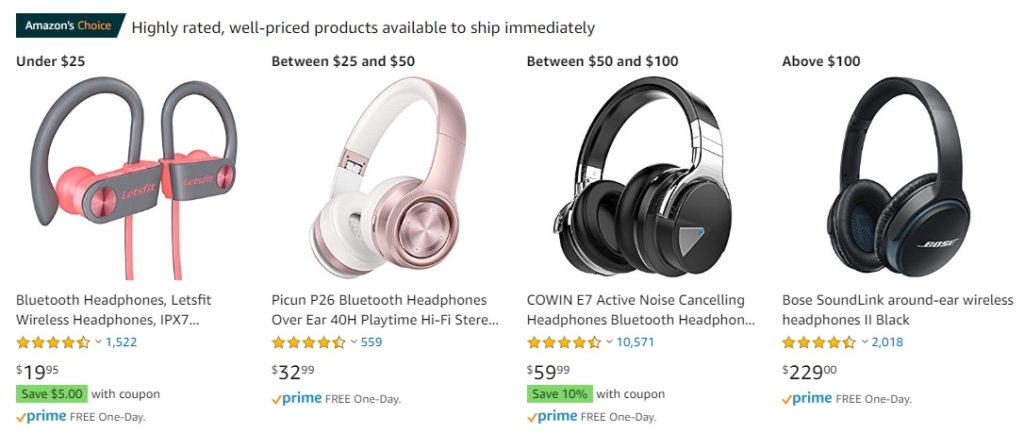
This is where a tool such as PowerReviews for Ratings and Reviews is a game-changer. Aggregating your product’s positive feedback, you put your satisfied customers front-and-center to reel in more leads while they’re in the research phase.
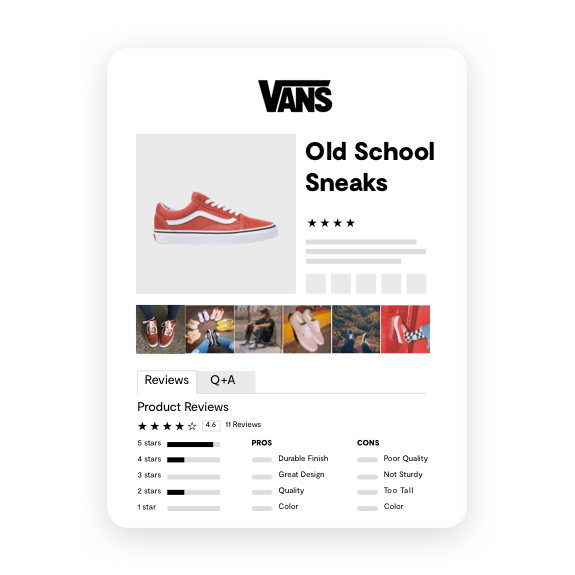
With our Social Collection tools, along with ratings and reviews, you make the consideration process a visual experience. Providing user-generated content on product pages helps give potential consumers visual cues into what exactly they’re getting–and not from just your brand, but other trusted shoppers.
Going beyond reviews, remarketing ads that target former site visitors can serve as your “second chance” to someone who might have looked you up but failed to convert. Facebook cites a ton of success stories such as Brassy Bra who dramatically lowered their cost-per-acquisition while upping their conversion rate via remarketing.
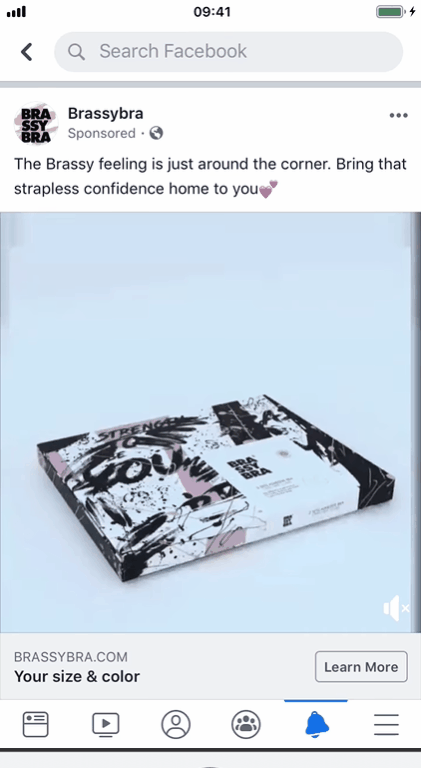
Part 3: Purchase
Let’s say that you’ve won someone over and they’re ready to buy. That doesn’t mean that your job is done. Not by a long shot.
The purchase phase has many moving pieces that oftentimes fly under the radar for brands. Consider that the average cart abandonment rate still sits around 70% in 2019. Someone might have the intention to buy but that doesn’t mean that they’re a “sure thing.”
For starters, a high-converting purchase page loads quickly and is easy to navigate. According to Unbounce, there’s a direct correlation between laggy sites, lower conversion rates and higher bounce rates. This is why effective SEO on product pages is critical.
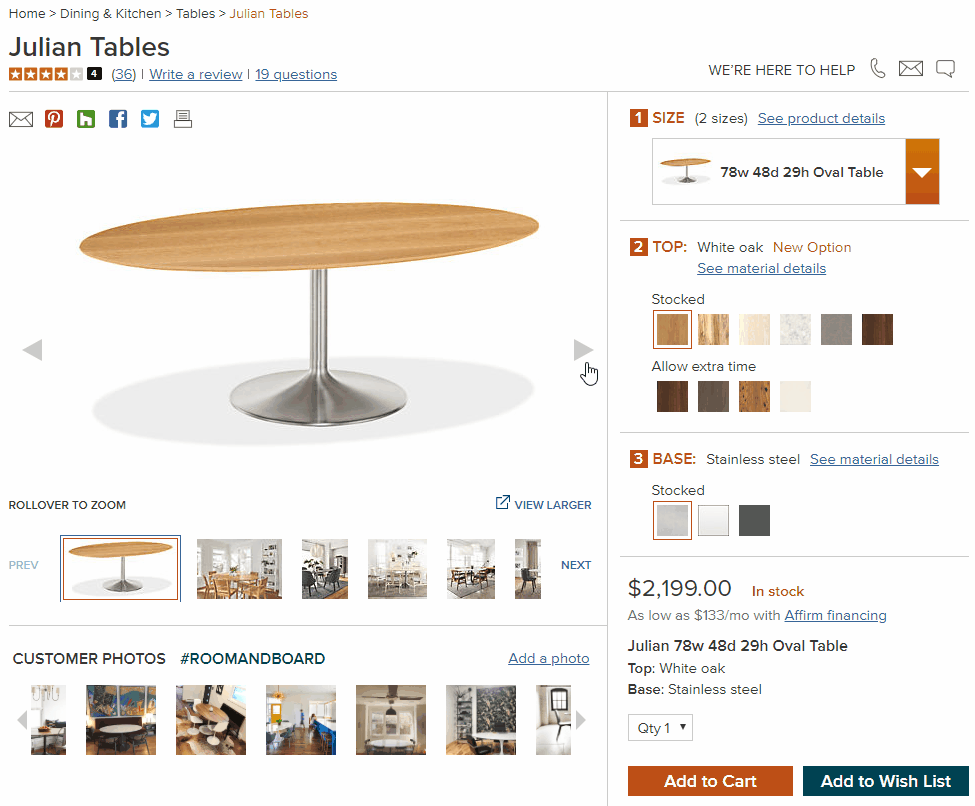
At the same time, it’s important to include elements on-site that’ll boost conversions. This includes star-ratings, user-generated content and, you guessed it, product reviews.
Room and Board’s product pages are a prime example of what we’re talking about. A variety of product photos and interactive content helps seal the deal with customers who might be on the fence.
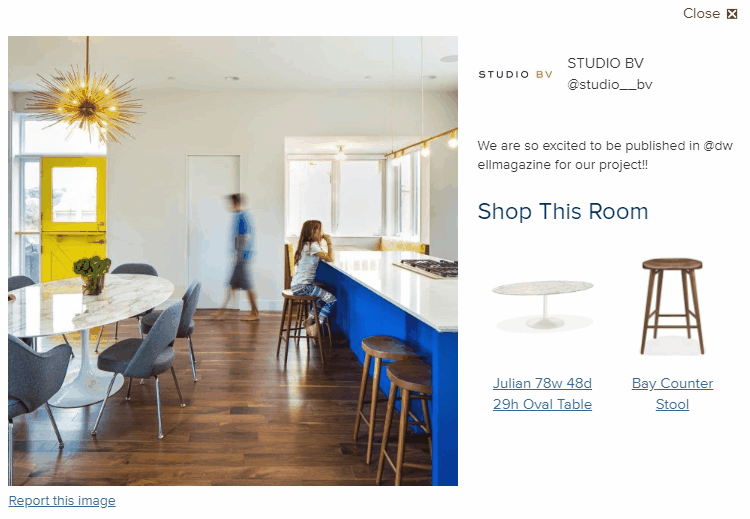
Meanwhile, the wealth of reviews help customers better understand the in’s and out’s of a product. PowerReviews Review Snapshot aggregates the most important key terms for customers to help them make informed decisions.
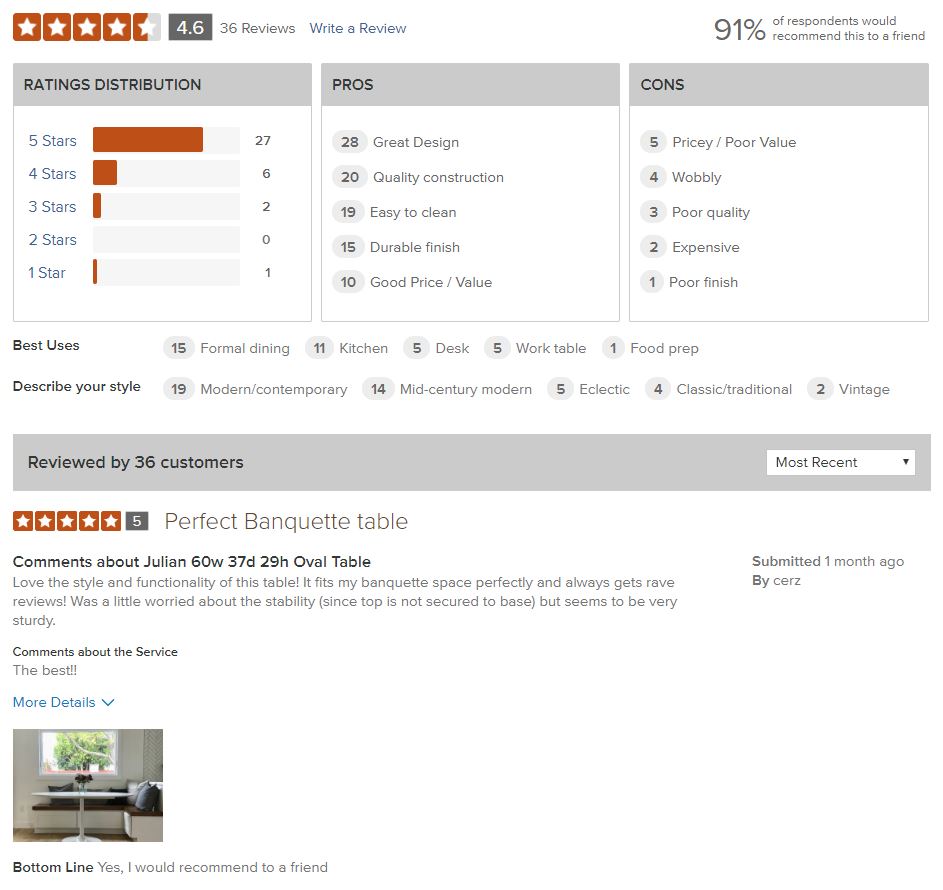
See how that works?
Part 4: Retention
Remember: the customer journey isn’t over when someone makes a purchase. Your end-game should be to turn customers into enthusiastic brand advocates for the long-term.
The good news? Doing so might be easier than you think. Data shows 48% of shoppers say they start the path of purchase with a brand or retailer website because they’re a previous loyal customer.
If you’ve created a seamless experience so far and likewise deliver an awesome product, you’ve already done the “hard part.” Now it’s your job to make frequent, relevant touch points with former buyers.
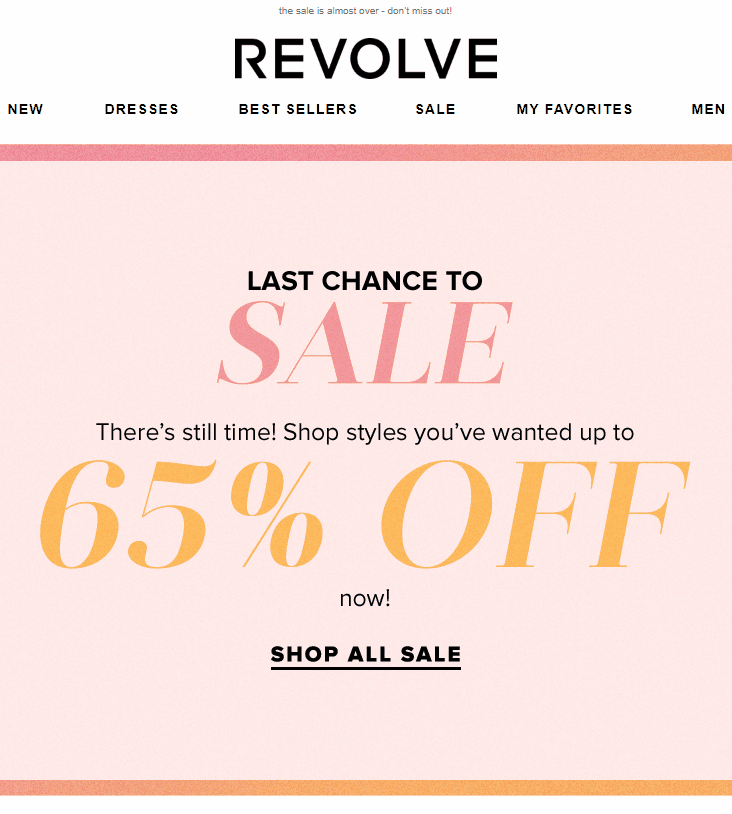
This might include email offers and newsletters exclusive to your followers. See how Revolve entices their shoppers with bold and flashy sales messages?
You could also go the route of social promotions and remarketing ads. Here you can specifically target past customers (like this example from Smallwoods).
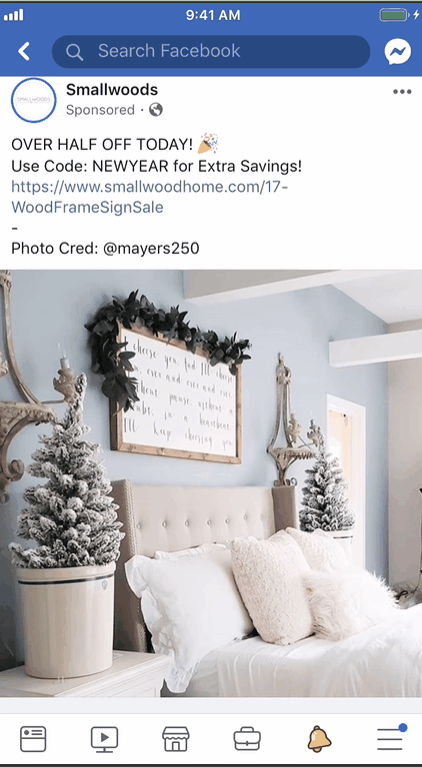
Oh, and don’t forget loyalty programs that encourage customers to return to your storefront time and time again. Creating a sense of community and rewarding your customers for always coming to you is a great way to build better B2C relationships.
For example, Sephora’s Beauty Insider program incentivizes repeat business with free gifts and other perks for sign-ups. What better way to make sure you’re retaining as many customers as possible!
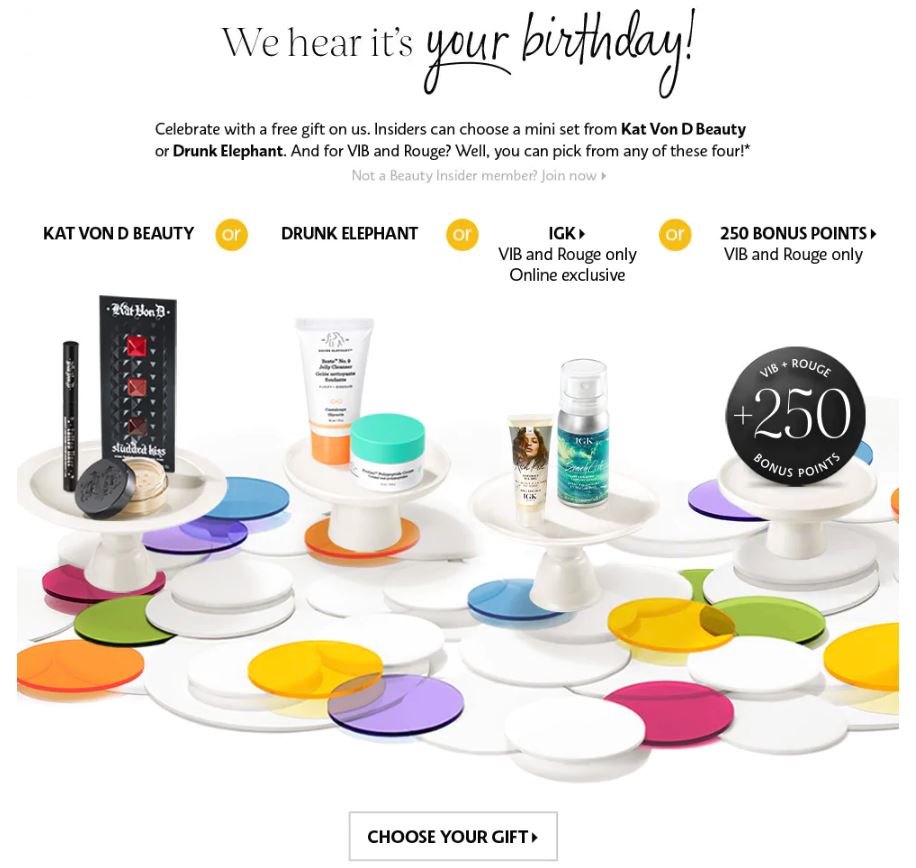
Experimenting with different customer retention strategies clues you in on how to keep folks in your funnel for the long haul.
Part 5: Advocacy
The end-game of your customer journey should be to create brand advocates that help guide others through your path to purchase. That means encouraging people to share their latest purchases and positive customer feedback on a consistent basis.
For example, brands like Skechers show love to their followers with giveaways and opportunities to be featured in their Instagram feed.
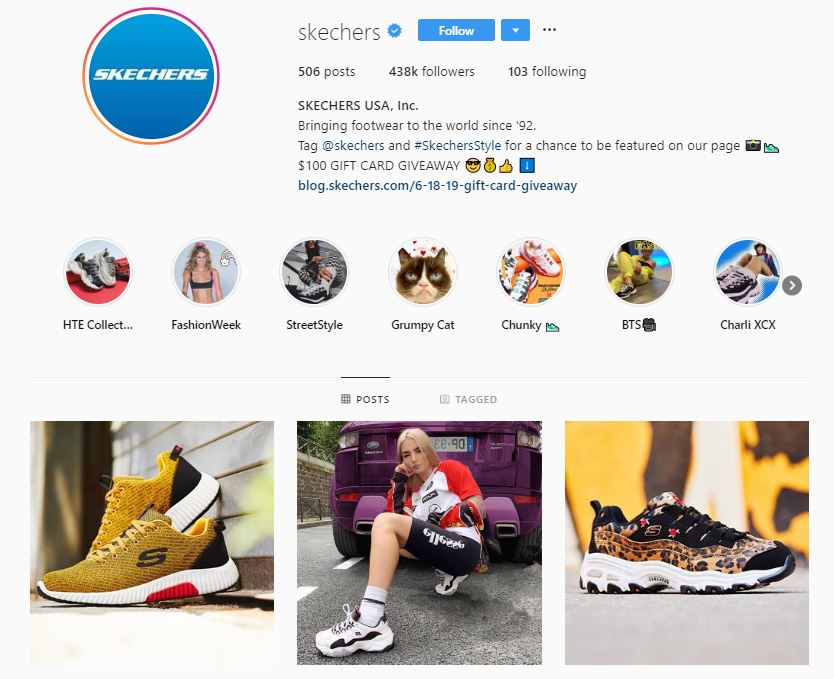
Those featured customers also have a chance to be featured on-site in their lookbook. This makes sharing content a breeze with simple advocacy tactics.

And of course, happy customers should be empowered to highlight their positive experience with your brand. PowerReviews helps brands and retailers get more product reviews and through it’s leading review collection capabilities. This helps businesses showcase more product details and consumer feedback to others on their own customer journey.

The customer journey then comes full circle as one customer’s experience leads others to discover your brand themselves.
How to Make Sure Your Customer Journey Makes Sense
Now that you understand the steps of your customer journey, it’s time to figure out what’s working and what’s not. Because all of this stuff is kind of theoretical, right?
You have these marketing tactics in place, but how do you know if it actually clicks with people? What better way to figure it out than by sending actual shoppers through your funnel and to gather real customer experience feedback.
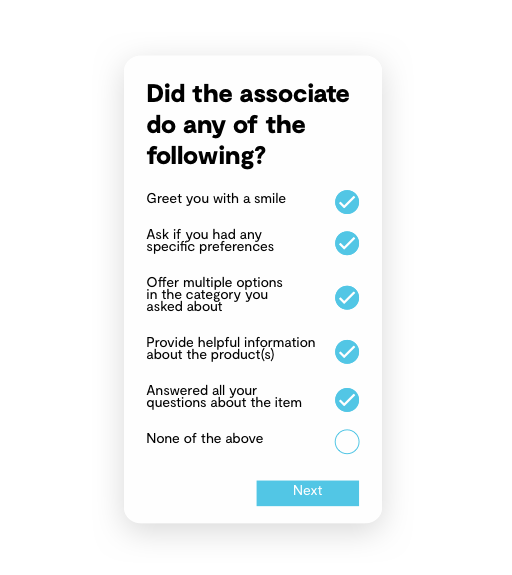
That’s the benefit of working with a mystery shopping program like the one we offer at PowerReviews. With an emphasis on customer experience, Journey IQ helps complete the customer journey by diving into the in-store experience consumers encounter when shopping from you.
There’s no replacement for feedback from flesh-and-blood shoppers, and PowerReviews does the hard work of curating that feedback for you. Through Journey IQ, we send your loyal shoppers on missions to uncover in-store insights all through their mobile devices.
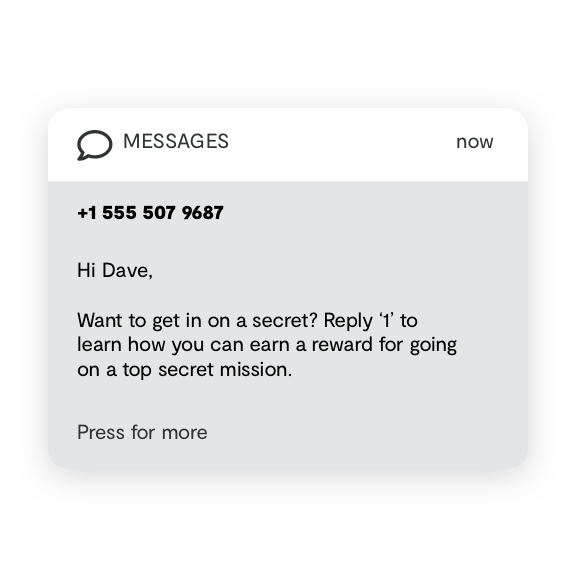
You collect, aggregate and analyze the feedback–and instead of paying the typical hundreds of dollars per mystery shopper, you simply reward these customers with a discount for their work. This allows you gain more sales when they shop from you and incentivizes shoppers to give you feedback for a discount!
Pinpoint what channels you should prioritize, which products people love and weaker points in your funnel. It’s a full circle journey to understand every point for your customers. Luckily, there’s some pretty simple steps to follow to help you get more sales and higher conversion rates.
What Does Your Customer Journey Look Like?
If you want to create an engaging experience for your shoppers, you need to break down your customer journey.
Although customer journey mapping might require some legwork up front, it’s totally worth it in the long-run. With so much competition in any given retail space, doing so is key to maximizing the value of your customer base.
With the help of tools such as PowerReviews, you can make a more positive impression on would-be customers and keep the ones you have happy.





